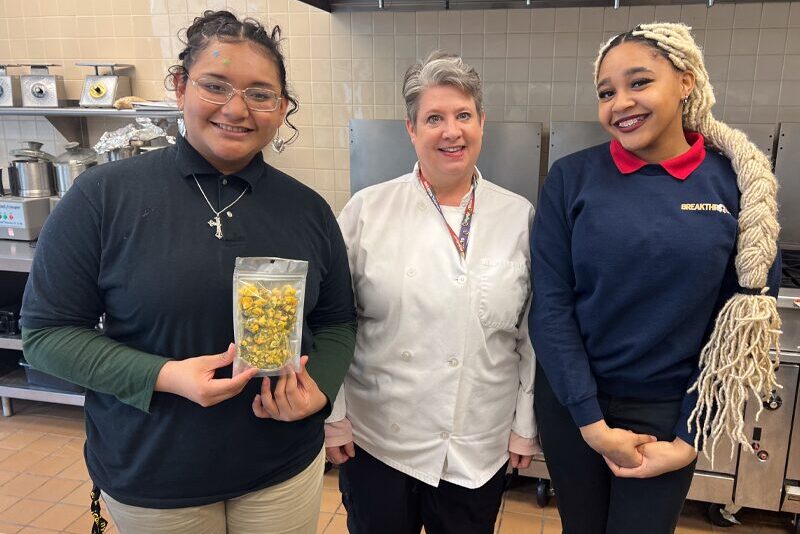Milton Hershey School Students Excel in NASA H.U.N.C.H. Challenge
Two Milton Hershey School students recently stepped out of their comfort zones and experienced a Breakthrough moment. As a result, they realized their work is truly out of this world. Culinary Arts Teacher Samantha Katzaman’s Nutrition and Food Science class placed in the top ten schools in the nation in the NASA H.U.N.C.H. Culinary Challenge.
Katzaman and senior students Felisita Vasquez and Zhawna Freeland traveled to Johnson Space Center in Houston, Texas in mid-April to compete in the finals. The results are expected to be released later this school year.
For Felisita and Zhawna, being members of a class that earned such a high accomplishment was a team Breakthrough and a personal one. Neither of them had much culinary arts experience before this year. Both decided to try something new by taking a class not required for their Career and Technical Education career pathway.
“I love jumping around and trying different opportunities at MHS,” Felisita said.
For Zhawna, the drive to take Katzaman’s class was much more practical.
“I never knew how to use a knife before. I figured it was something I should know,” Zhawna said.
She accomplished her goal and soared to new heights with the NASA H.U.N.C.H. Challenge. Participants were required to create a savory breakfast dish featuring a vegetable that astronauts could eat in space. Zhawna proposed a chickpea and vegetable scramble, which almost fit the challenge’s nutritional requirements. However, to succeed, the class first had to do some problem-solving.
The scramble originally had more sugar than required, even though it had no added sugar. Onions are high in sugar, so they overcame one obstacle by removing that ingredient. The challenge prohibited salt, which Americans often use freely to add flavor. Felisita tapped into a culinary trick from her homeland of Hawaii and tossed in some dried seaweed. The ingredient’s natural sodium added flavor and a crunchy texture. As with any group, NASA must design its meals to consider all dietary restrictions. To make their meal vegan-friendly, Katzaman’s students substituted eggs with chickpeas.
The MHS Agricultural and Environmental Education program helped the team by freeze-drying the dish, much like NASA chefs would.
“I was surprised how good it was after being freeze-dried,” Zhawna said. “The peppers still had a bit of a crunch to them.”
The H.U.N.C.H. Challenge required the class to submit a research paper outlining microgravity’s effects on the human body and how food is processed in outer space. The students created a video to help judges understand their dish and the process they used to create it.
As they await the final results of the NASA H.U.N.C.H. Challenge, Katzaman feels a strong sense of pride in her students.
Explore Academic Opportunities at MHS“Judges seemed impressed that we brought the actual freeze-dried version of the dish they created,” she said. “One of the food scientists said she was actually working on a similar dish herself.”


